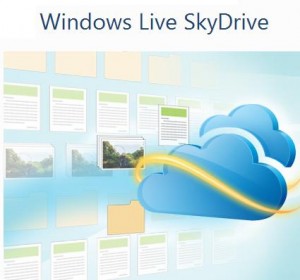 Microsoft will extend SkyDrive from being an online file storage service into what the company calls “a device cloud” that is closely integrated with Windows 8, the next version of the company’s OS.
Microsoft will extend SkyDrive from being an online file storage service into what the company calls “a device cloud” that is closely integrated with Windows 8, the next version of the company’s OS.
The vision is for SkyDrive to become “a single drive” available across all the devices people use, giving them “instant, secure and private access to their files” and letting them share those files with others, Microsoft said in a blog post on Monday.
In Windows 8, the “DNA” of SkyDrive and the Mesh file sync technology will merge into a single service, according to the post, published on the company’s “Building Windows 8” blog and authored by Mike Torres and Omar Shahine, group program managers for SkyDrive.
Specifically, SkyDrive will be included as an application on Windows 8, SkyDrive files will be accessible from the desktop via Windows Explorer and users will be able to “fetch” files remotely from their hard drive through SkyDrive.com.
The SkyDrive application included with Windows 8 will be a Metro style one, meaning its user interface will be optimised for touch screen-based devices like tablets, and it will make it possible for people to access their SkyDrive accounts from any other Metro style application through Windows 8 controls for opening, saving and sharing files.
“This will bring a file cloud to every Metro style app, allowing you to open files in your SkyDrive and save them right back to your SkyDrive just like you would on your local hard drive,” the post reads.
To take advantage of this functionality, end users only need to register an email address on a PC running Windows 8, after which “whenever you save files on SkyDrive, every Windows 8 device you use will provide seamless access to those files,” according to the post.
Meanwhile, Windows 8 will also have a traditional desktop application for SkyDrive, to be managed via Windows Explorer and available to desktop applications like Office. Users will be able to store and retrieve SkyDrive files through a drag-and-drop interface.
Through a sync functionality based on Mesh, people will be able to have desktop copies of their SkyDrive files, and synchronise changes so that versions are kept consistent both locally and on the cloud. This desktop version of SkyDrive will also be compatible with devices running both Windows Vista and Windows 7.
Finally, SkyDrive on Windows 8 will also let users remotely access files that they’ve opted to only store locally on a PC’s hard drive, a feature Microsoft developed assuming that not everyone will want to store every file online in SkyDrive.
This remote access via SkyDrive.com will require that users enter a second authentication element — a code Microsoft will send them to an alternate email address or to their mobile phone.





